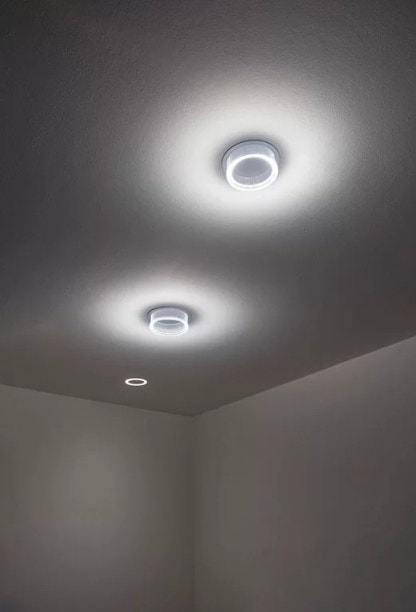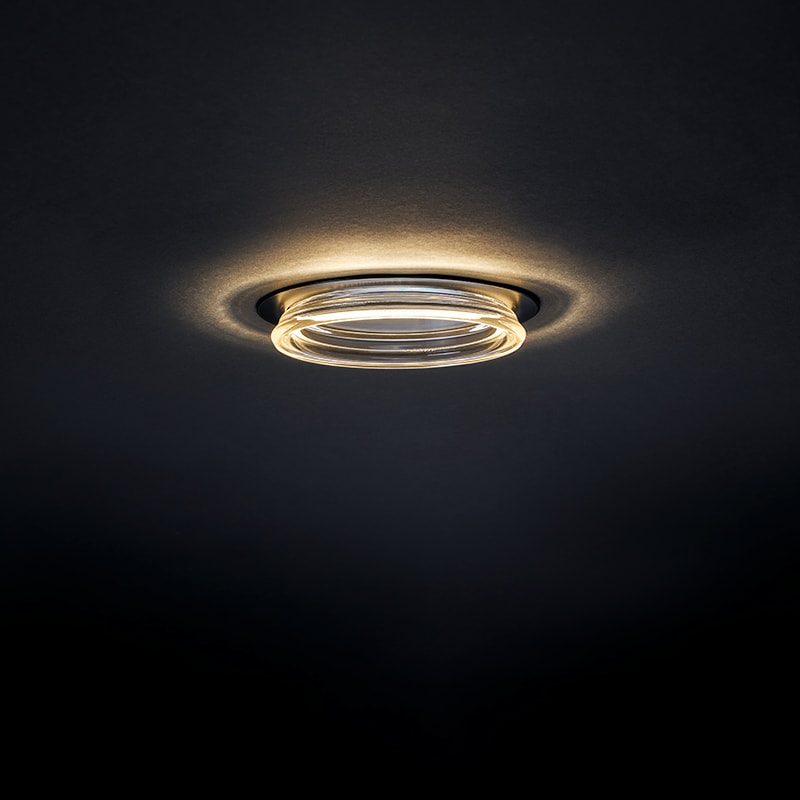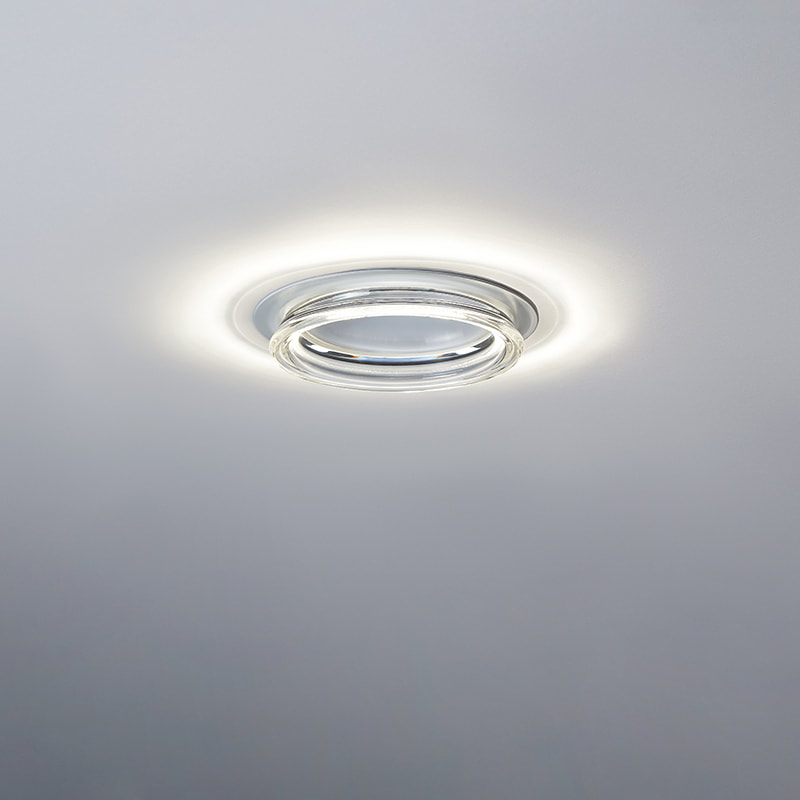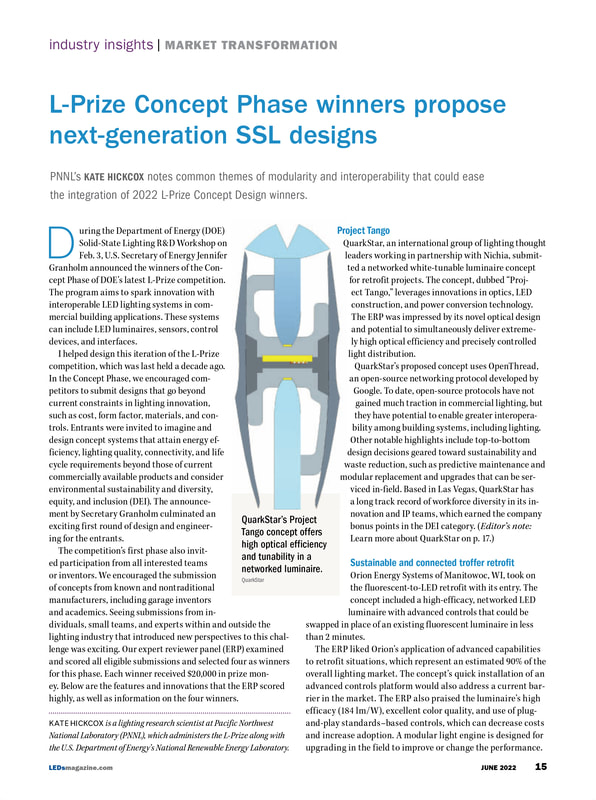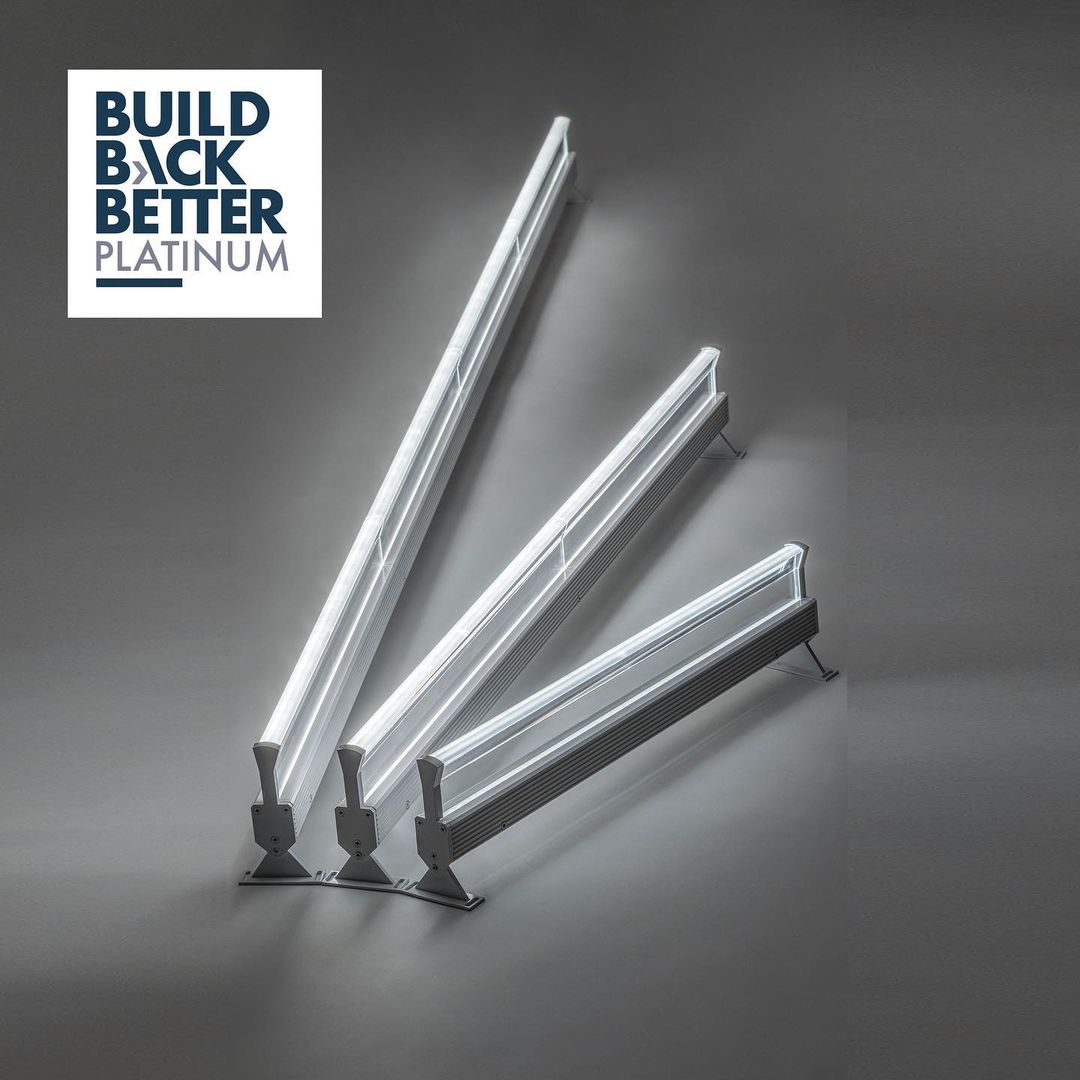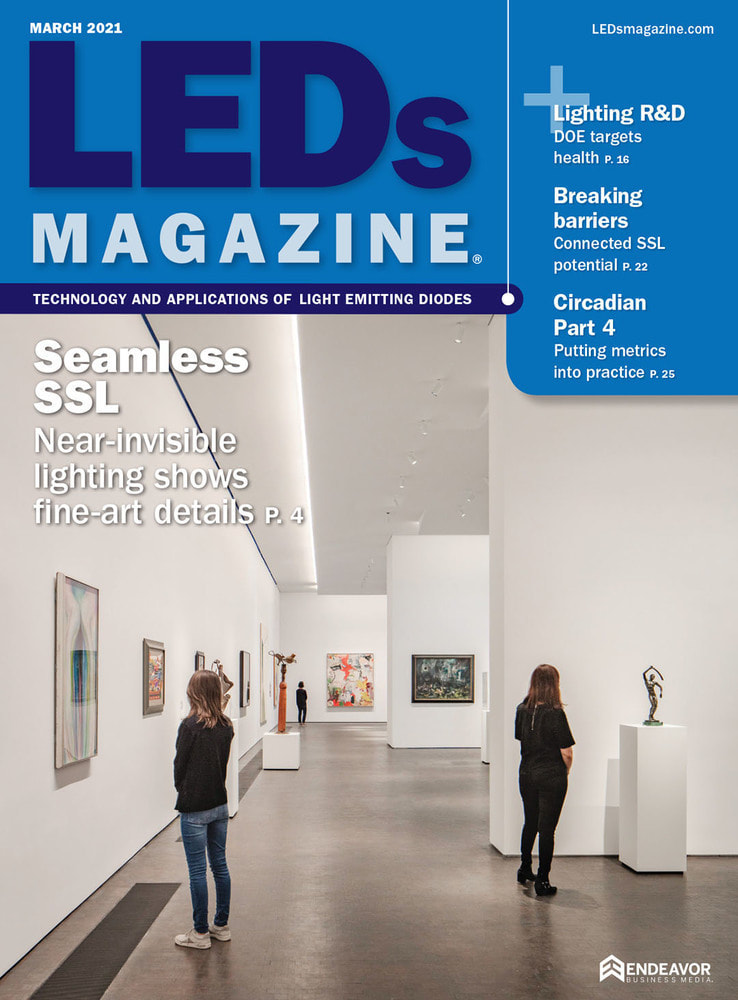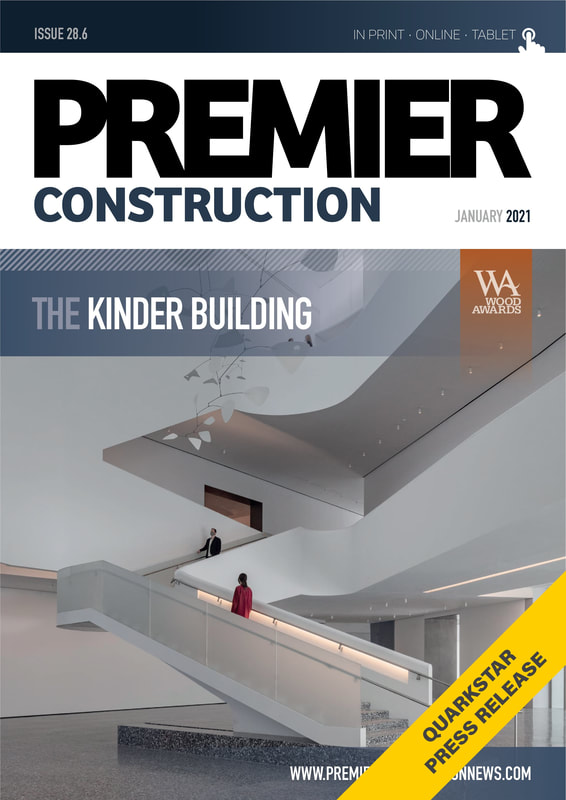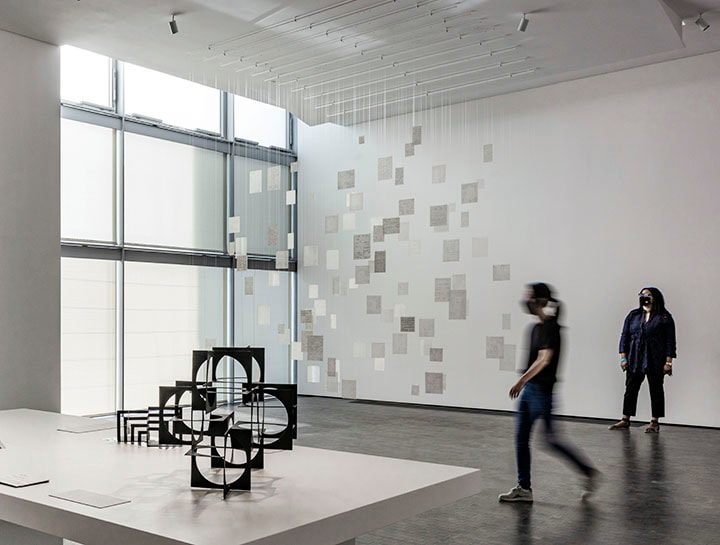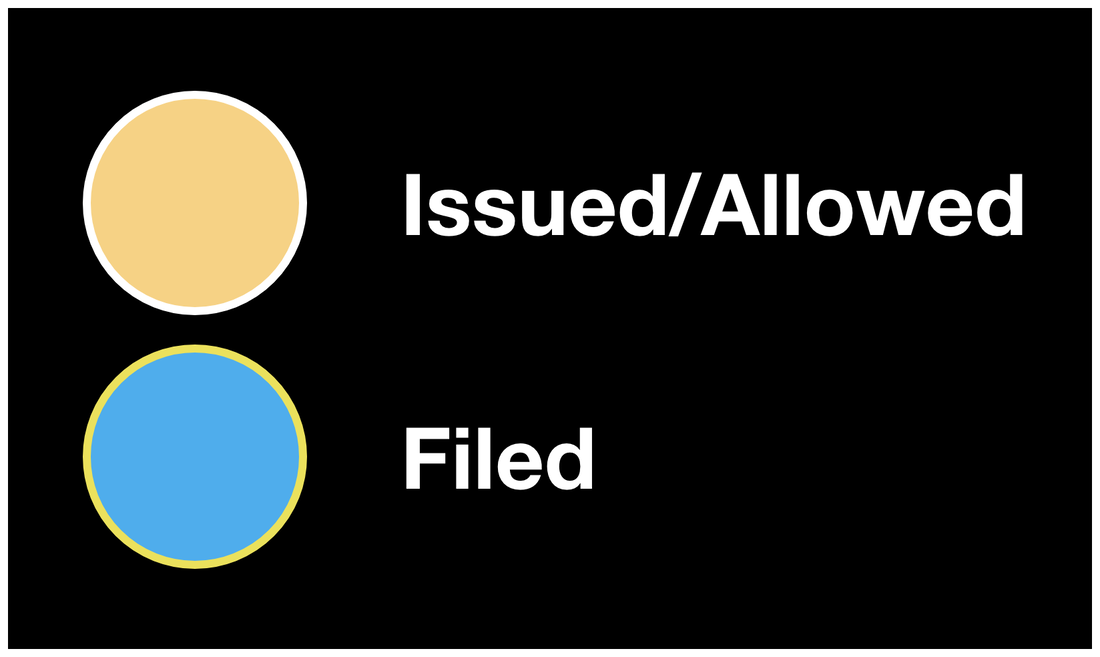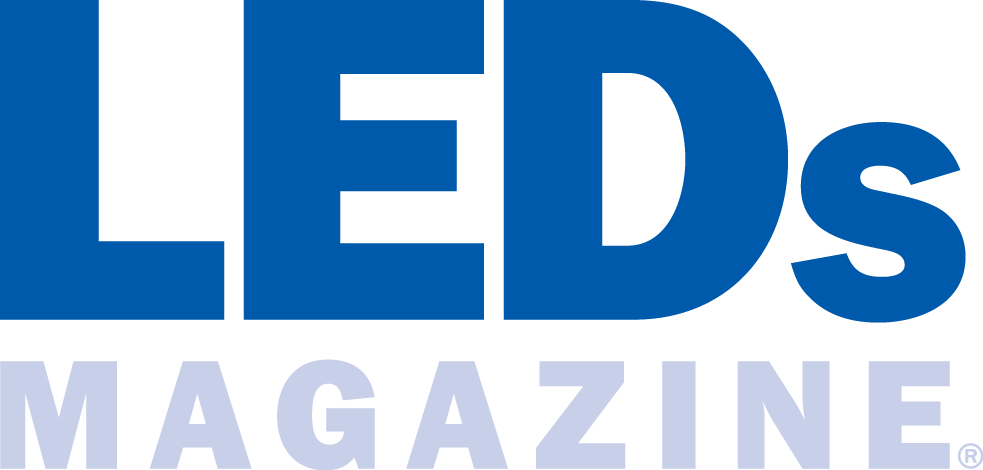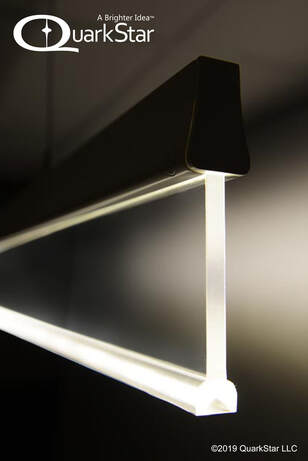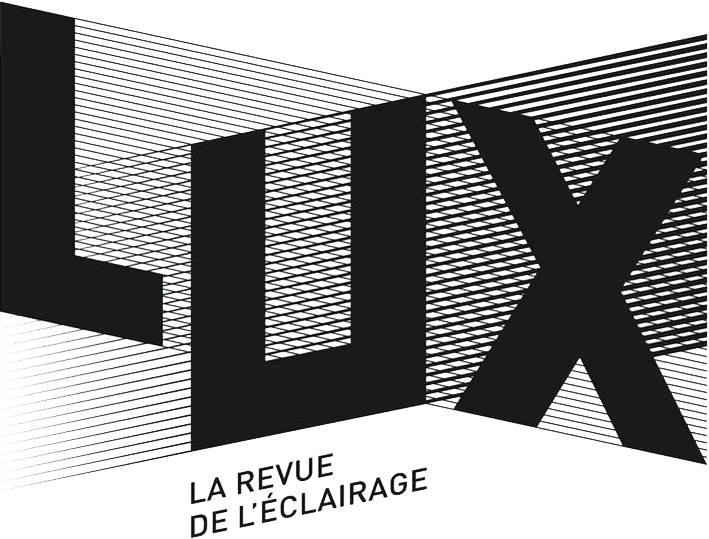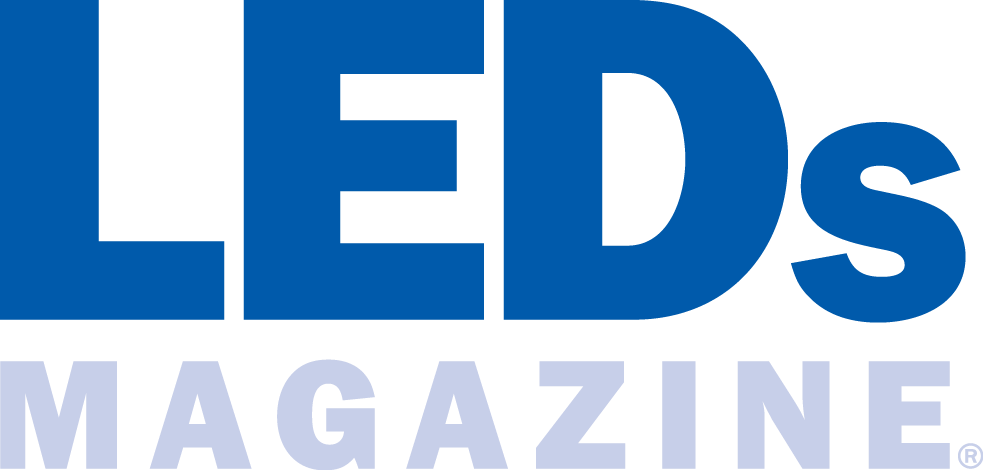◼︎ May 10 2023 | Light Now
Lighting and Innovation Part 3: It Takes a Platform
|
By Clifton Stanley Lemon
How many designers does it take to change a lightbulb? Answer: Does it have to be a light bulb? While this old joke lampoons the legendary persnickety design thinking personified by Steve Jobs and others, the response is quite valid. Who in the lighting industry today is asking this question or similar ones? Who’s coming up with compelling answers? In Part 1 of this series, I explored some of the prevalent operating narratives in lighting today; in Part 2, I explored how innovation typically scales and spreads with certain combinations (stacks) of technologies and business models. In this essay, I look at the role of innovation in creating a platform; I profile a particularly promising innovation by my client QuarkStar; I describe its technical details, design potential, and cascading benefits; and I examine the role of imagination and inventing new narratives in the process of innovation. Solid state lighting (SSL) has effected significant energy efficiency gains on a global scale, by any measure, a singular success with tremendous impact. For obvious and unavoidable reasons, chiefly the need to facilitate rapid LED adoption, we mostly replaced incandescent, fluorescent, and HID light sources in luminaires with LEDs. But so far, the impact of SSL has only been at the chip level and has not extended throughout the lighting system of luminaires, power electronics, and controls. The history of innovation shows that seeing a problem in a completely different way often sparks innovation. Rather than asking, “How can we adapt LEDS to lighting?” QuarkStar dared ask, “How can we adapt lighting to LEDs?” Efficacy and Light-on-Target In the early days of SSL, commercial viability meant efficiency – we rushed to optimize the lumens per Watt (LPW) of LEDs and never talked about fixture efficacy. LED chips reached and exceeded legacy light source efficiency levels many years ago, but we haven’t made a full pivot to talking about fixture efficacy. How effective and useful is the light produced by the luminaire? A fundamental problem in lighting is to deliver “light-on-target”: light where you want it and nowhere else. Light emitted at undesired angles causes discomfort, glare, or light pollution. And a luminaire can be marketed as having a 200 LPW LED, but if only 50% of the light makes it to where it’s needed, LPW is an egregiously misleading metric. Product vs Platform “Platform” is a narrative-driven by tech companies like Uber, Apple, and Facebook. The best example of a product-based platform is Apple’s iPhone, which engendered the concept of “app” and an “ecosystem” of app developers. In Machine Platform Crowd: Harnessing Our Digital Future, the authors describe how thinking machines, platforms, and crowdsourcing are transforming our world, but this is not the sense of “platform” that I use here. The chance for an innovative lighting product being the basis for a platform like iPhone is not zero, but it’s still far from being realized. The hype about turning lighting into the backbone of building IoT systems has been a distraction and never focused on lighting itself. Let’s look at innovations that do that! Here I use the term “platform” in a more practical sense to describe a product design approach crucially needed in lighting today: a system that integrates and optimizes LEDs and optics and allows a wide range of configurations and applications. Integrating Down
The Quarkstar team asked, “How can we condition and shape light to be pleasing? How can we deliver light-on-target most efficiently? How can we make LEDs not just equal to but BETTER than incandescents?” The basic efficiency problem had been solved in LEDs, now, the challenge was to make light more beautiful, acceptable, and affordable in all lighting markets. LEDs are fundamentally, dramatically different from all preceding lighting sources: they are orders of magnitude smaller and brighter (see diagram below). With light sources so tiny, the team asked, “What happens when we scale down the whole light fixture?” According to Edge-X co-inventor Ingo Speier, “….we were sketching out different ways to solve several known problems. And all of a sudden it clicked and we said, Why don't we do this? Edge-X came up because it was an optical system removed from the light source and its heat.” “The light distribution pattern is our real product, not the fixture. Starting with this premise we saw that we could take a given distribution geometry as input and work down through the extractor to the light guide to the injector to the LED.” The team was literally thinking outside the box, streamlining the different layers in the system – separate housings, diffusers, and reflectors – integrating all of their functions directly into the optic. This innovation process became known to the team as “integrating down” said Edge-X co-inventor Bob Gardner. “Integrating down is not only about miniaturization – being able to do the same thing in a smaller package – that’s where the lighting industry has been stuck. It’s about unlocking new capabilities that evolve from integrating several functions together in one package. The iPhone is the classic example of integration that allowed Apple to launch a global phenomenon. What we’re doing is far simpler than the iPhone but similar in spirit. We’re able to do things with light never before possible, driven by the inherent qualities of SSL,” said QuarkStar COO Jaqueline Teng. The diagram below shows the integrated functions of the injector, a Compound Parabolic Concentrator (CPC), lightguide, and extractor. On the edge dimension, the CPC captures light from each side of an LED and herds it all in roughly the same direction. On the linear dimension, the CPC creates cones of light, which evenly mix the light from adjacent LEDs so that by the time it reaches the end of the lightguide it’s optimized for shaping by the extractor, which acts like a lens.
The Edge-X Platform Edge-X offers something unique in lighting today, a fully controlled light path that delivers light on target. Its key innovation is not a single component but an integrated system of LEDs and optics that shapes light distribution in a completely new way. Virtually no wasted light means luminaire efficacy that almost matches LED efficiency. LEDs turn electrons into photons very efficiently. But that’s only part of the solution – turning photons into useful light requires a different innovation. Many light-conserving strategies work at the chip level, but in a fully integrated system, the connection between the LED chip and the optics is optimized, enabling “precise sculpting and unprecedented control of light,” according to QuarkStar’s Eric Bretschneider. The four elements of the Edge-X system are the LEDs; the injector; the lightguide, and the extractor. LEDs – Edge-X is designed to work with conventional LED packages or with small Chip Scale Package (CSP) devices. The smaller the source LED, the smaller the optical system and luminaire can be. (QuarkStar is also exploring how Edge-X works with different kinds of emerging LED package designs). Edge-X was designed to be as LED-agnostic as possible in order to enable the widest flexibility and developmental possibilities. Injector – The injector is a CPC with carefully calibrated curves that orient the LED’s light optimally before it enters the lightguide. CPCs work both for collecting photons or emitting and are used in solar photovoltaic, solar thermal technology, and other applications like automotive taillights. Lightguide – The lightguide mixes light and transfers it to the extractor. Because of its high total internal reflectance (TIR) it optimally preserves the shaped light from the injector. As the injectors are positioned along the edge of the lightguide, the lightguide mixes and evens out light from adjacent injectors, as shown in the diagram. This design is fundamentally different from lightguides commonly used in industry-standard LED luminaires, which often have surface treatments such as dimpling that emit light from faces of the lightguide, resulting in wasted light. Extractor – The extractor is where the final sculpting of the light occurs. When the light arrives at the extractor from the lightguide, it’s optimally mixed and is ready to be shaped. Extractors can be configured in a wide range of distributions (including asymmetric) and swapped out in the field easily. This edge extraction capability is unique to the Edge-X platform, which is covered by over 100 granted patents worldwide. Cascading Benefits
Edge–X delivered unexpected possibilities beyond solving the original problems. The precise control of light afforded by the platform delivers many complimentary benefits to manufacturers, designers, and end users. This integrated system gives the lighting industry a design language with which to realize new innovations.
Thermal Management – Edge-X provides excellent thermal management of LEDs by removing the light source from the heat source. This redefines how optics and housing can interface and how they’re controlled.
Eliminating Glare – Edge-X luminaires with two different distributions – one directional and one indirect – eliminate glare by keeping luminance out of direct line-of-sight and by softening the contrast between the light source and the surface it’s mounted on. Miniaturization – the Edge-X approach allows the entire system to scale in sync with the size of the LED, which proportionately reduces the need for materials, attachment fittings, LED count and power, and space required to install the luminaire. As LEDs become smaller and brighter, the integrated LED/optical system allows much greater freedom and flexibility in both luminaire design and lighting design. Also, a smaller luminaire footprint leaves more space for electronics and controls. Modular Manufacturing and Assembly – Edge-X is a highly modular platform that allows separate control and management of each component, allowing flexibility for manufacturing business models and supply chains. Separating the Edge-X lightguide from the extractor allows manufacturers to stock the basic assembled lightguide units and order different extractor configurations with distinct distribution patterns as orders get closer to fulfillment. This efficient, modular approach allowed the luminaires for the Museum of Fine Arts in Houston to be manufactured and assembled in record time by QuarkStar’s Canadian team, led by Mr. Speier. Customization – Another QuarkStar innovation is the Edge-X Design Advisor software, which takes a desired light distribution pattern as an input and creates specific injector, lightguide and extractor geometries to be fed directly into CNC and injection molding manufacturing sequences. This means a designer can easily create custom luminaires for a specific project.
Customization – Another QuarkStar innovation is the Edge-X Design Advisor software, which takes a desired light distribution pattern as an input and creates specific injector, lightguide and extractor geometries to be fed directly into CNC and injection molding manufacturing sequences. This means a designer can easily create custom luminaires for a specific project.
Lighting Ceilings and Walls – In many applications designers are gradually moving away from downlight-only designs, which pose limitations in optimal lighting of spaces and people. Edge-X facilitates designs that can illuminate walls and ceilings as well as providing excellent directional distributions, sometimes with the same luminaire, as shown in the downlight below. A Culture of Innovation QuarkStar’s approach to innovation for Edge-X was ideal for the U.S. Department of Energy’s L-Prize Phase 1 competition, in which the company was a winner in 2022. QuarkStar easily met DOE’s stretch goals, which included optimal color rendering, thermal performance, lifetime, and high efficacy. QuarkStar also has filed over 500 patents in the U.S., Canada, Japan, and the E.U, and been granted 289 – a record that is on par with many much larger lighting industry leaders. Summary While innovation in lighting may appear to be stagnant, that’s only compared to the unprecedented rapid development of computers, electronics, and information technology, in the last 100 years. Despite the hype, other core industries such as steel production, agriculture, construction, and automobiles don’t show the same level of transformation – we shouldn’t expect the same from lighting. QuarkStar completely redefined the problems in lighting, and solved many of them at once with the Edge-X platform. Innovation in lighting needs to be applied to the problems that affect everyone in the built environment: eliminating glare; making lighting easier to purchase, install, and operate; delivering light on target; and creating healthier more comfortable environments accessible to a wide range of people. These are the things that designers, building users, and building owners, and operators care most about. In Part 4 of this series, I will share perspectives for key industry thought leaders and talk not about “future-proofing” but about “present-proofing” – how we can focus more on the business at hand to adapt to the challenges we face in the built environment. Images: Quarkstar Read Part Two of this series here. Read Part One of this series here. |
◼︎ May 10 2023 | Sylvania Press Release
Sylvania Lighting wins Red Dot Design Award
for the Concord Equinox LED Downlight
|
10/05/2023 Budapest, Hungary – Sylvania Lighting has been awarded with the Red Dot Design Award 2023 in the Lighting Design category for its innovative Concord Equinox LED downlight. The product’s unique design redefines the current standards for LED downlights, with no central visible light source, allowing the user to experience the effect and not the impact of the luminaire. The Concord Equinox brings innovation, flexibility, and style together, and offers any environment a highly modern and stylish appearance due to its halo effect. The Red Dot Design Award is one of the most sought-after design competitions in the world with more than 20,000 entries per year. In this year’s edition, the Red Dot jury comprised of 43 experts from 20 countries.
"We are proud that Sylvania Lighting, with its Concord Equinox has received the Red Dot Design Award 2023. This unique luminaire is a true innovation in the downlight segment and brings immense possibilities to architects and interior designers alike. This is the sixth time that Sylvania Lighting has won a Red Dot Award, which is a great honor and recognition for all our designers and manufacturing community in the United Kingdom. We anticipate the design community to embrace this product across Europe. It confirms our commitment to invest in European research and development and to continue bringing innovation to the global lighting market," said Simon Reed, Global Vice President & CEO (EMEA) for Sylvania Lighting. Concord Equinox - a new design benchmark Concord Equinox has been developed, using the latest optical technology. The product features an adjustable optical system which allows light to be emitted not only downwards but also upwards, creating a beautiful halo effect on the ceiling. This direct and indirect architectural lighting creates a unique atmosphere and enhances space. Concord Equinox has been developed in partnership with QuarkStar™, who provided the optical technology for this project. QuarkStar’s™ system of light refraction allows, for the first time, an indirect component to be integrated into a downlight without supplementary optics. This results in a sleek, discreet, and conceptual design that also produces a tailored distribution with a UGR (Unified Glare Rating) of less than 19, putting Equinox in the highest quality classification in European interior lighting standards. "Concord Equinox has been developed in collaboration between our R&D, product, marketing, and production teams. The result is a revolutionary luminaire which brings cutting-edge innovation to the traditional downlight segment. The game-changing design and exceptional technology create a unique light rendition that generates emotion," says Agnieszka Paprocka, Senior Product Line Manager EMEA at Sylvania Lighting. About Sylvania Lighting
Sylvania Lighting is a leading provider of consumer, architectural, professional, and residential architectural lighting solutions and has more than a century of expertise in lamps and luminaires. It supplies the public, private and commercial sectors worldwide with high-tech products and systems. Worldwide, the Group's customers rely on the expertise of the Sylvania and Concord brands, offering a complete range of high-quality, energy-efficient lighting solutions for professional applications. For more information about Sylvania, visit: https://www.sylvania-lighting.com/ Follow us on our social media: Facebook, YouTube, LinkedIn About QuarkStar As solid-state lighting’s first deep-tech skunk works, QuarkStar seeks to develop real-world solutions that overcome current compromises on light quality, size, efficiency, and controls. QuarkStar has consistently won industry and government awards for groundbreaking innovations in optics, LED packaging, and integrated systems. This year's recognitions include being selected as a Phase 1 winner of the US Department of Energy’s first L-Prize competition in a decade and being recognized by FAST Company as one of the 2022 Best Workplaces for Innovators in the US. With inventors who include many well-known pioneers of solid-state lighting from the US, EU, and Canada, QuarkStar is approaching its 300th granted patent in the creation of a brand-new ecosystem of light and lighting. For an inside look at Quarkstar, see LEDs Magazine's June 2022 issue for an in-depth profile of QuarkStar as an engine for innovation in solid-state lighting: Profiles in Lighting: QuarkStar (MAGAZINE) For more information about QuarkStar, visit www.quarkstar.com Contact: [email protected] |
◼︎ February 26 2023 | The Light Review Podcast
QuarkStar: Award-winning Waveguide Technology
|
By John Bullock
Developments in lighting technology have tended to focus on – no, more than tended, have always been focused absolutely on – light sources. It’s little wonder, of course. We have shifted from light created by hot tungsten filaments and excited gas discharge tubes into a world dominated by solid state electronics. what we have not spent so much time thinking about is how we manage to get efficient illumination from the source material – the optical systems. It’s time to look at waveguide technology. Optical system design has always been obliged to follow the form factor of the light source, and if the light source is as big as your fist, then the optical control could be as large as a frying pan. But what happens when the light source isn’t much bigger than a full stop . or a line of full stops . . . . . . . . . .
I exaggerate, but only slightly. I first became aware of Quarkstar in February of 2018 when I met the management team at Strategies in Light in Long Beach, California. My notes from that meeting said; “This is one to keep an eye on . . .” and that has proved to be the case. A month later, we met again, this time in Frankfurt at Light + Building 2018. It was there that we were shown a prototype for a waveguide solution to light management in a commercial product – the recessed downlight. That product, from Concord Sylvania is now a production item – so this seems to be the ideal time to get some background information on what waveguide technology is all about and how Quarkstar went about producing such an efficient way of controlling distributed light from a luminaire. I spent a happy half-hour talking with Wilson Dau of Dau Design and Consulting Inc., and Ingo Speier, President of Gaia Photonics who were heavily involved in the development of this waveguide phenomenon. |
◼︎ December 2022 | LEDs Magazine
QuarkStar and Sylvania present new solution to European downlight segment

FIG. 1. Recently installed for BTB GES in Paris, France, Sylvania's Equinox - based on QuarkStar's Edge-X optical technology - provides a fill light at the same time as a downlight distribution, all from a single source of LEDs. The design mitigates glare and provides more of an open-sky feel while also creating an aesthetically pleasing halo effect.

FIG. 2. Edge-X optics create an indirect uplight at the same time as the downlight using refraction to split the light distribution. The halo effect can be adjusted by extending the optic downwards or upwards from the flush mount in the ceiling.
|
Edge-X optical technology delivers new direct/indirect capability in downlights for architectural lighting manufacturers.
Carrie Meadows Dec. 7, 2022 Last month, solid-state lighting skunkworks QuarkStar and architectural lighting provider Sylvania announced their collaboration on a new LED luminaire that launched as part of Sylvania’s high-end Concord lineup. The partners tout the Equinox downlight (Fig. 1, above), currently available in EMEA, as the first major advance in recessed-can downlight design since the product's invention 75 years ago. Equinox leverages QuarkStar’s Edge-X optical engine design to resolve the traditional downlight’s “cavern-like effects” while also alleviating discomfort from glare, said QuarkStar chief operating officer Jacqueline Teng in an interview with LEDs Magazine. All things Equinox Describing the luminaire simply as a “downlight” is slightly misleading. With the Edge-X technology, a single row of 90-CRI LED sources is coupled to a waveguide where the illumination generated is mixed by total internal reflection. Then the light is split at the opposite end by a shaped optic called an extractor using refraction, rather than a typical reflection technique, allowing Edge-X to deliver both downlight to the space and uplight to the ceiling in a circular halo effect. This allows the Equinox to achieve a Unified Glare Rating (UGR) of less than 19 for visual comfort, where the lower the number, the better the glare control. (Both the U.S. Green Building Council LEED certification and International WELL Building Institute requirements list a maximum allowable value of 19 in order to achieve a specific credit in their evaluation methods.) While UGR designations are often based on primary use of the fixture, the industry at this point does not have a universal descriptor for a recessed-can downlight that simultaneously provides both indirect and direct distributions. For the time being, a simple “downlight” it is. Agnieszka Paprocka, Sylvania’s senior product line manager – EMEA, summarized the company’s aims with the luminaire and its contribution to architectural lighting. “The ability to minimize dark ceilings, entirely changing the ambience of a room whilst beautifully illuminating the space, is unique to the QuarkStar technology [inside Equinox] and is a game-changer for the industry,” she said. Paprocka added that Equinox brings a compact footprint and flexibility to ceiling lighting with a locking mechanism that allows the optic to be nearly recessed for “a minimalistic edge of light” or fully extended (see Fig. 2). The sleek fixture delivers a total of 2500 lm with a luminous efficacy of up to 125 lm/W and is available with various trim, driver, and control options. The future of “QuarkStar Inside” LEDs also spoke with industry consultant Clifton Stanley Lemon, who is working with QuarkStar on its North American business development strategy. Lemon noted that while the Edge-X optical technology was previously covered due to its award-winning linear installation into the Kinder Building at the Houston Museum of Fine Arts, the Sylvania SSL product marks the first commercially available, circular production model with what he called “QuarkStar Inside.” “The optical control engine — QuarkStar’s innovation — opens up enormous potential in creating new forms of light distributions,” Lemon explained. “Here, for example, dual-distribution luminaires may become an entirely new category. And [Equinox] certainly shows that we can rethink a layered light approach and effectively get two light layers from a single light source.” Referring to a 2019 Strategies in Light presentation by Wilson Dau*, Teng and Lemon confirmed that the company has been working on numerous applications of the Edge-X technology since its earliest public demonstrations in 2018. During SIL, Dau focused on how to revamp the downlight form, starting with improving the appearance of light from a direct/indirect system and optimizing glare control. Dau explained how the lessons learned from the company’s development of linear optical solutions could be applied to future forms, including the circular downlight, depending upon the shape of the extractor optic at the end of the waveguide, which would be defined by the lighting application. “Advanced optical control is going to decrease the contrast between the luminaire and the surrounding area,” Dau said in the SIL video. The approach, he continued, helps to balance and reduce light from “the offending angles […] between 90° and 45°” that are typically responsible for discomfort caused by glare. Teng noted to LEDs that the circular luminaire prototype was first demonstrated at Light+Building in 2019 based on optical designs developed by another QuarkStar team member, Dr. Eric Bretschneider. But shortly thereafter, as we all experienced, “COVID lockdown measures massively disrupted supply chains and product teams alike and the Equinox project was delayed,” Teng said. Still, for QuarkStar, the Equinox release is only the beginning. “We have a small internal team with a great sense of innovation and motivation to advance lighting,” Teng said. Using a deep tech approach to lighting solutions, she said, the company is looking forward to working with additional U.S.-based production and OEM partners. Lemon added, “The point is to provide partners and collaborators with an optical system that transcends conventional optics, offering them the Edge-X platform to completely reinvent luminaires and their functions: including improved light distributions, light quality, color control, and light extraction efficiency.” Leaving convention behind “The [Edge-X] optical design is all about providing ‘useful’ lumens,” Teng explained. “It’s a difficult concept to quantify, but absolutely necessary to pursue.” SSL pioneer Roland Haitz, a member of the QuarkStar team until his passing in 2015, often expounded on maximizing the efficacy of LEDs “‘to capture every photon possible,’” Teng quoted. “The corollary is they then need to be put where they’re needed and only where they’re needed. Does a fixture really have high efficacy if half its light is not where it’s supposed to be? This is the next stage in the pursuit of true efficacy.” Teng explained that the optical technology was designed to be fairly agnostic with respect to what LEDs it couples and that the beam-shaping capabilities are wide open. “Edge-X is an extremely versatile platform where the imagination is really allowed to play,” she explained. “There are now two commercial examples of the Edge-X technology that have wildly different form factors — linear and circular — and each has wildly different distributions, but both are based on the same optical engine. And to further prove the point, QuarkStar’s recent L-Prize Concept Phase–winning design is also built around Edge-X.” As one L-Prize judge commented, “The optical design is novel and stands out over today’s luminaire systems.” “Up until now,” Teng said, “the industry has had its hands full just ‘fixing’ LEDs’ problems so that they perform on par with previous light sources, albeit with better efficiency. No one has really looked past that yet to what capabilities SSL technology can provide beyond previous light source technologies besides the obviously tiny form factor. We haven’t seen many people using the opportunity to manipulate and shape the light itself, which is where LEDs can really shine by comparison.” “The ability to exquisitely shape light without secondary optics, while delivering a high quality of light, can redefine the idea of what a luminaire can be,” Lemon said. “We will be engaging with designers in order to understand how this new technology can inspire their creativity. We’ve been limiting our imaginations to the forms and approaches of the past for too long. We’re just beginning to explore the full potential of SSL and advanced optics to do things we never knew we could do — it’s an exciting time!” *Wilson Dau is principal at Dau Design and Consulting Inc. (DDCI) and has consulted with QuarkStar since the firm's inception. CARRIE MEADOWS is managing editor of LEDs Magazine, with more than 20 years’ experience in business-to-business publishing across technology markets including solid-state technology manufacturing, fiberoptic communications, machine vision, lasers and photonics, and LEDs and lighting. |
◼︎ November 2022 | QuarkStar Update
QuarkStar’s Innovation Engine Reinvents the Downlight
|
The release of the Sylvania Equinox downlight, done in partnership with QuarkStar, is the most recent demonstration of QuarkStar’s innovative efforts to redefine the conventional
Las Vegas, Nevada, November 14th, 2022 – As part of a collaboration between architectural lighting solutions provider Sylvania and solid-state lighting’s first deep-tech skunk works QuarkStar, Sylvania has released the Equinox – a revolutionary new downlight in Sylvania’s high-end Concord family of lighting solutions. With optics based on QuarkStar’s all-in-one optical engine, Edge-X™, Sylvania’s Equinox is the first circular implementation of a QuarkStar technology that has already won much critical acclaim in linear applications. Equinox is available for order in Europe and the Middle East. Sylvania’s Equinox offers not just a radically new design and functionality but is a completely new platform for the conventional downlight that takes advantage of QuarkStar optics’ ability to simultaneously provide both directional downlight and indirect uplight on a ceiling. QuarkStar’s advanced optics use refraction instead of reflection to split light from a single row of LEDs into highly targeted directional and ambient illumination from a single luminaire. This mitigates glare, provides more of an open-sky feel than directional-only distributions, and creates an aesthetically pleasing halo effect. The promise of this indirect lighting contribution to a downlight has already won QuarkStar an innovation award at Light + Building for its first demonstrated prototypes. As further demonstrated by QuarkStar at LightFair – by placing the light-emitting elements only on the perimeter of the luminaire, the downlight’s central real estate can be utilized by other electronics such as sensors. This is unlike conventional SSL downlights that use a solid disc of LEDs, which leaves no room for extended functions. This revolutionary optical design can now provide both beautiful light and advanced IoT capabilities with a simple retrofit of existing downlights. This multipurpose blend of lighting functions is not only a breakthrough in luminaire design but a platform with robust opportunities for development into new forms of luminaires. The optics behind the unprecedented performance of Sylvania’s Equinox is the most recent highlight in a long history of innovation from QuarkStar. Earlier this year, the company’s winning entry in the US Department of Energy’s L-Prize® (Phase 1) competition integrated several different QuarkStar technologies, including Edge-X. Edge-X was highlighted by the DOE judges for its unprecedented control of light and its efficacy. QuarkStar was also recently selected by FAST Company/Accenture as one of the 2022 Best Workplaces for Innovators in the US, particularly for its ability to continue innovating at a rate that outpaces companies many times its size despite the challenges posed by the Covid-19 pandemic. Sylvania’s Equinox is just one example of how QuarkStar’s fresh and imaginative thinking results in never-before-seen capabilities. This is the first revolution in the ubiquitous downlight since its invention in 1938, but not the last. QuarkStar optics offers a number of innovative future design capabilities. With the US Dept of Energy estimate of approximately 700 million downlights in the US alone, downlights and troffers are the most common type of fixtures in commercial and retail environments. By revolutionizing how such spaces are lit, QuarkStar technologies can re-invent how downlights can be used by architects and lighting designers. With nearly 300 granted patents, QuarkStar has pursued a mission of “no compromises” between quality of light and efficacy with a focus on “do more with less”. This has allowed them to continue pushing solid-state lighting’s boundaries beyond the role of simple light source replacement to enabling brand new capabilities that only LEDs can fulfill. QuarkStar is actively seeking lighting industry partners to help bring this and other QuarkStar technologies to the North American market. |
◼︎ November 2022 | Sylvania Press Release
Sylvania launches a game-changing range of innovative lighting to rival conventional downlights
|
Concord Equinox – premium lighting luminaires, utilising a brand-new system of light refraction
England, 14th November 2022 – Today Sylvania launched its next generation of premium luminaires that uses QuarkStar’s award-winning light refraction technology. The Equinox, part of Concord by Sylvania range, delivers a high-end premium lighting solution that re-invents how downlights can be used by architects and lighting designers and revolutionises how spaces are lit. With a choice of two position settings, extended or non-extended, the new system provides a way of controlling the light source in a highly decorative and innovative way. In a first-of-its-kind, light is refracted, not reflected, both downwards for a direct component and upwards onto the ceiling for an indirect component. This creates a halo effect which improves the ambience and avoids the dark, cave-like effect normally witnessed with conventional downlights. At the same time, it also lowers the contrast which would otherwise result in discomfort glare. Thanks to Sylvania’s SylSmart Standalone wireless controls, users can benefit from quick and easy app programming that enables lighting to be changed at the touch of a button. “The ability to minimise dark ceilings, entirely changing the ambience of a room whilst beautifully illuminating the space, is unique to Equinox and is a game-changer for the industry,” explains Agnieszka Paprocka, Senior Product Line Manager – EMEA for Sylvania. QuarkStar’s light refraction technology allows, for the first time, an indirect component to be integrated into a downlight without supplementary optics. This results in a sleek, discreet, and polished design that also produces a tailored distribution with a UGR (Unified Glare Rating) of less than 19, putting Equinox in the highest quality classification in European interior lighting standards. The radically new way of coupling an optic to a waveguide is what enables this unprecedented control over the photon as soon as it emerges from the LED chip, maximising light extraction efficiency while sculpting the light in three-dimensional space. Paprocka adds: “Unlike conventional waveguide products, Equinox does not use the waveguide as a light-emitting surface. Instead, the waveguide acts solely as a guide and mixing chamber. This ultra-low glare, space-enhancing product can either be recessed completely to create a minimalistic edge of light, or it could be in full drop-down view, yielding the ultimate in light distribution from a compact form factor that augments the sense of space. In both instances, the very high purity and clarity of the optic means the light source virtually disappears into a ceiling installation.” Equinox has been designed to offer an alternative to traditional downlights, matching their conventional sizes, but providing direct and indirect light distribution. The luminaire offers trim and trimless versions for installation in plaster ceilings. It delivers up to 2500 lumens with low glare of UGR<19 and high efficiency of up to 125lm/W with CRI90 LED chips for excellent colour rendering. For more information about Equinox, visit Sylvania’s website: https://www.sylvania-lighting.com/en-int/news/items/concord-equinox-a-premium-and-innovative-downlight About Sylvania Sylvania is a leading provider of consumer, professional and architectural lighting solutions. The company is part of Feilo Sylvania Group and is headquartered in Budapest, Hungary with innovation and solution centres in 25 countries worldwide. The Feilo Sylvania Group is owned by Shanghai Feilo Acoustics Co. Ltd., which was founded in 1984 and is China’s first joint-stock company (SH 600651). Concord by Sylvania is renowned for its strong design ethos, high technical performance and aesthetic form. Concord focuses on bringing lighting solutions to meet the needs of architects, interior and lighting designers. For more information, visit sylvania-lighting.com Contact: [email protected] About QuarkStar As solid-state lighting’s first deep-tech skunk works, QuarkStar seeks to develop real-world solutions that overcome current compromises on light quality, size, efficiency, and controls. QuarkStar has consistently won industry and government awards for groundbreaking innovations in optics, LED packaging, and integrated systems. This year's recognitions include being selected as a Phase 1 winner of the US Department of Energy’s first L-Prize competition in a decade and being recognized by FAST Company as one of the 2022 Best Workplaces for Innovators in the US. With inventors who include many well-known pioneers of solid-state lighting from the US, EU, and Canada, QuarkStar is approaching its 300th granted patent in the creation of a brand new ecosystem of light and lighting. For an inside look at Quarkstar, see LEDs Magazine's June 2022 issue for an in-depth profile of QuarkStar as an engine for innovation in solid-state lighting: Profiles in Lighting: QuarkStar For more information, visit www.quarkstar.com Contact: [email protected] |
◼︎ September 2022 | Fast Company
QuarkStar Recognized as Fast Company 2022 Best Workplaces for Innovators United States
|
Fast Company and Accenture have recognized QuarkStar as Best Workplaces for Innovators United States 2022.
"Congratulations on QuarkStar earning recognition as one the top companies with a culture of innovation that empowers employees at every level to blaze trails and break new ground." - Fast Company/Accenture More from Fast Company on the Best Workplaces for Innovations:
QuarkStar is genuinely honored to be recognized as one of the top workplaces for innovation in the United States. Especially during the pandemic, the nature of 'team' in team innovation has evolved. In our case the 'team' transcends its individual members to include families, children, and pets. It also includes our collaborating companies, such as Nichia for the 2022 L-Prize win (phase 1). All are revered members of Team QuarkStar! |
◼︎ June 2022 | QuarkStar Press Release
QuarkStar and Nichia Win US Department of Energy L-Prize (Phase 1) Competition
|
QuarkStar, a deep tech startup dedicated to advancements in solid-state lighting, along with its L-Prize® partner Nichia, the world's largest supplier of LEDs, are honored to have their submission "Project Tango" chosen as a winner in the U.S. Department of Energy's L-Prize Phase 1 competition. The results were announced personally by the U.S. Secretary of Energy Jennifer Granholm.
|
◼︎ June 2022 | LEDs Magazine
Profiles in Lighting: QuarkStar
|
LEDs Magazine's new department provides an inside look at a leading individual or firm involved in the LED and SSL manufacturing, design, and supply chain. Our first subject is SSL technology developer QuarkStar, which recently won an L-Prize.
Based in Las Vegas, QuarkStar technically may be considered a startup, but its employee roster reads like a list of lighting and technology industry superstars. Perhaps not surprisingly, the alma maters of the staff — led by CEO Louis Lerman, chief financial officer Sara Kuwabara, and chief operations officer Jacqueline Teng — rival any international ranking of higher-education institutions and include Stanford University; University of California, Berkeley; University of California, Los Angeles; Massachusetts Institute of Technology; Rice University; Tulane University; and several technical universities in Germany...
|
◼︎ June 2022 | LEDs Magazine
L-Prize Concept Phase winners propose next-generation SSL designs
|
During the Department of Energy (DOE) Solid-State Lighting R&D Workshop on Feb. 3, U.S. Secretary of Energy Jennifer Granholm announced the winners of the Concept Phase of DOE’s latest L-Prize competition. The program aims to spark innovation with interoperable LED lighting systems in commercial building applications. These systems can include LED luminaires, sensors, control devices, and interfaces...
|
◼︎ January 2022 | LEDs Magazine
LED innovations transform SSL market prospects over two decades
|
Dr. Robert Steele, a co-founding member of Team QuarkStar, is considered the LED and SSL industry’s pioneer of market research and forecasting. In this 2022 article for LEDs Magazine, Dr Steele surveys the remarkable history of the LED, and the evolution of its applications and markets over the past two decades.
Dr. Robert Steele Background
|
◼︎ August 2021 | Build Back Better
Platinum Award Winner – QuarkStar's Q-Wall Luminaire
|
A new international award celebrating and rewarding innovation. Build Back Better is a new international initiative to champion innovation in buildings. QuarkStar's technology and role in the Museum of Fine Arts, Houston's new Kinder building has won the groundbreaking Platinum award.
"Using refraction instead of reflection, the ‘light shaping’ lenses at the edge of the Q-Wall guides the output from LEDs and ‘sculpts’ the distribution of light in a space. The Q-Wall was recently installed in the Kinder Building at the Museum of Fine Arts, Houston." |
◼︎ August 2021 | Build Back Better
The Q-Wall lighting optics developed by QuarkStar are being used for the first time in new £330 million (US$450 million) art gallery.
|
QuarkStar’s radical Edge-X technology has been specified by lighting design practice L’Observatoire for the newly opened Kinder Building, centrepiece of a massive expansion to the Museum of Fine Arts in Houston.
The expansion was the largest fine art gallery project in North America in 2020, designed by US Steven Holl Architects in partnership with Kendall Heaton. QuarkStar’s Q-Wall asymmetric linear lights with the Edge-X optics have been installed in nearly all galleries that use artificial lighting as their primary source of exhibit illumination. Using refraction instead of reflection, the ‘light shaping’ lenses at the edge of the Q-Wall guides the output from LEDs and ‘sculpts’ the distribution of light in a space. The Q-Wall was recently installed in the Kinder Building at the Museum of Fine Arts, Houston... |
◼︎ May 2021 | LD+A
Inside the Museum: QuarkStar's revolutionary technology bridges the natural and artificial
|
QuarkStar’s Edge-X™ technology delivers something previously never before seen in the lighting world: evenly distributed sheets of light easily spanning 16-ft gallery walls and daylight matching color-tuning from a single row of LEDs, all from a footprint so small when the museum saw it placed in a ceiling mockup, they chose to redesign the cove to take advantage of the empty space that was left behind.
It is top-to-bottom innovation of the luminous: the skylights above, the liminal glass cladding outside, the light-based installation art below in the underground tunnels, and QuarkStar innovations in the middle ... all in service of the ultimate innovations on display – the art itself.
|
◼︎ March 2021 | LEDs Magazine
Houston museum leverages QuarkStar optics to uniformly light art walls
|
Fixtures that hide within the building architecture and spectral tuning bring natural light effects into the exhibit spaces in the new Kinder Building at the Museum of Fine Arts, Houston.
Startup QuarkStar has announced that its Edge-X technology has been installed throughout the new Nancy and Rich Kinder Building at the Museum of Fine Arts, Houston (MFAH). The relatively diminutive optical element can spread LED light uniformly over large areas such as walls while allowing the solid-state lighting (SSL) fixture to be essentially hidden in a room’s architectural features or recessed into the ceiling. Meanwhile, a multi-channel LED light engine enables the museum lighting to match the abundant natural light that the building design draws into the public spaces and galleries... |
◼︎ January 2021 | LUX Review
Ground-breaking optics debut in £330 million art gallery
|
INNOVATIVE lighting optics developed by technologists in the US are being used for the first time in new £330 million (US$450 million) art gallery.
QuarkStar’s radical Edge-X technology has been specified by top lighting design practice L’Observatoire for the newly opened Kinder Building, centrepiece of a massive expansion to the Museum of Fine Arts in Houston. The expansion was the largest fine art gallery project in North America in 2020, designed by US ‘starchitect’ Steven Holl. |
◼︎January 2021 | Premier Construction - QuarkStar Press Release
Inside The Museum: A look at the technology that bridges the natural and the artificial in lighting.
|
What makes great lighting? The average person may find it difficult to put into words, but they know it when they see it... literally. Light is essential to the human experience, and even without a technical vocabulary for lighting, nearly every person on earth can grasp whether a space is lit well or poorly within a single glance.
Gallery lights here face some of the most rigorous challenges of quality, high-performance lighting that exist in the industry...
|
◼︎ January 2021 | Premier Construction
The Nancy and Rich Kinder Building
|
Designed by Steven Holl Architects especially for the display of the important and rapidly growing MFAH collections of 20th and 21st-century art, to which it dedicates more than 100,000 square feet of gallery space, the Kinder Building is the final component in the museum’s eight-year $450 million project to expand and enhance its Susan and Fayez S. Sarofim Campus in the heart of Houston, the largest fine arts building development project of its time in North America...
This is what had attracted the interest of L’Observatoire and the MFAH. QuarkStar’s Edge-X technology delivers something previously never seen before in the lighting world: evenly distributed sheets of light that easily span the 16-ft distance between gallery ceiling and floor, colour-tuning that can match natural daylight from a single fixture with only a single row of LEDs, all from a footprint so small that the museum was able to redesign the petal-like coves that echo the gentle swoops of its top floor skylights so that the light fixtures could be tucked away neatly into the architecture...
|
◼︎ January 2021 | QuarkStar Press Release
Houston museum leverages QuarkStar optics to uniformly light art walls
|
Q-Wall’s diminutive size and best-in-class light distribution means curators can easily display art of multiple sizes and shapes throughout the galleries without worrying about hot spots or dark spots, while visitors are able to appreciate the collections from multiple viewpoints without distracting shadows or discomfort glare. © Richard Barnes
QuarkStar Lights Up a Galaxy of Art
|
HOUSTON - QuarkStar, a developer of award-winning LED lighting technologies, announces that its Q-Wall asymmetric linear fixtures were installed in the Nancy and Rich Kinder Building at the Museum of Fine Arts, Houston. Designed by architect Steven Holl, the Kinder building is the centerpiece of an 8-year $450 million expansion and redevelopment project and is currently the largest museum expansion in North America. After an amazing effort to complete it during the covid-chaos of 2020, it is now officially open to the public.
Specified by L’Observatoire International and handpicked by the MFAH’s Chief Operating Officer, Willard Holmes, QuarkStar’s award-winning Edge-X technology is installed as the primary exhibit illumination in nearly all galleries using artificial lighting as their primary illumination source. The Q-Wall flawlessly performs in one of the most rigorous and challenging environments for man-made lighting: the galleries of a premier museum. In a world’s first from a commercial general lighting product, Q-Wall uniformly illuminates the expansive 16-ft walls while color-mixing and matching straight from a beam-forming optic that is less than 1-inch wide. Q-Wall’s footprint is so small that when the museum saw it placed in a ceiling mockup, they chose to redesign the cove to take advantage of the empty space that was otherwise unnecessary. “This is what QuarkStar’s Edge-X enables,” CEO Louis Lerman says. “Rather than being forced to design around a fixture, an architectural vision such as the Kinder Building was able to integrate the fixture invisibly while delivering an experience nearly indistinguishable from standing near a window or under their innovative cloud-inspired skylights. “As Steven Holl has said, he likes to think of his practice in architecture as sculpting space with light. Well, QuarkStar’s Edge-X technology allows us to sculpt light itself in space, creating these beautiful sheets of indirect lighting. We are extremely proud to have been selected for this landmark architectural project.” Click on thumbnails to view full image
“[U]ltimately it’s about the experience of viewing art together with other people,” Gary Tinterow, director of the MFAH has said. “It’s a building for the long run; the light and space must work 100 years from now.”
The Kinder building is the final component of 650,000 square feet of new construction to unify the campus into 14 walkable acres. It will be specially dedicated to installments from the important and rapidly growing MFAH collection of 20th- and 21st-century art and will open with an exhibition highlighting a trove of major collections never before presented in depth. |
◼︎ January 2021 | QuarkStar Update
QuarkStar patents hit 500 applications globally with over 250 core technology patents granted to date in the US, EU, China, and Japan
|
2020 granted patents of a fundamental nature include:
➠ Specific optics required for the 2020 MFAH museum project ➠ Automotive applications: for headlights & in-cabin shaped lighting ➠ New approaches to color control, maintenance, and enhancing CRI ➠ Foundational & evolutionary approaches to LED filament ('Edison') bulbs |
◼︎ February 2020 | QuarkStar Presentation
QuarkStar presents the Integrated System of Lighting
|
The Integrated System of Lighting: Paving a New Path to Profitability
Presented by QuarkStar at Strategies in Light in February 2020 The inherent tendency to use familiar design means that the full potential of solid-state lighting technology has yet to be realized. LEDs offer a unique opportunity to develop a new class of fixtures of extraordinary design whereby the source and fixture are one-and-the-same. Manufacturers benefit from lower production costs and higher margins while simultaneously offering customers new form factors at lower price points that have superior performance and lifetime. Systems of this integrated nature reduce both cost and complexity, improve reliability and performance, and offer radically new opportunities for integration into the built environment. The endpoint is a true systems integration, where separate sources, optics, and fixtures are no longer needed while also offering brand new capabilities. The source and the fixture can become a single unit offering greater beam-shaping, enhanced color stability, and lower costs to manufacture. |
◼︎ November 2019 | LEDs Magazine
Materials and footprint options multiply in LED optics
|
SSL remains a multidisciplinary development effort and optics can be as important as LEDs in delivering quality of light. MAURY WRIGHT surveys some of the latest LED-centric optics options for general lighting and specialty applications
At the end of the day, optics in SSL applications serve the primary task of controlling beam distribution. Our final company in this article takes that task to a new level. QuarkStar is a late-stage startup company with a business plan focused on licensing optics technology to luminaire makers. The company, however, has developed some compelling demonstration optics, especially Edge-X for general illumination applications. The Edge-X optics combine light guide functionality that serves as a way for photons to travel from an LED light engine to the edge of the optic, where the company’s patented technology then forms the desired beam pattern delivering light just where it is needed. The nearby image shows the transparent planar light guide between the light engine and the beam-forming edge optics. Feilo Sylvania became the first SSL manufacturer to license the QuarkStar technology earlier this year.
|
◼︎ March 2019 | Lux - La revue de l'eclairage (France)
Light and Innovation: The new entrants who are transforming lighting
|
Will lighting be taking a new course? The arrival of the LED and digital lighting, which are completely redesigning our approach to lighting, is an obvious step in the revolution occurring in this sector. And the power of electronics, coupled with the creative human imagination, keeps pushing back the limits of the possible with completely new solutions - some of which are akin to technological breakthroughs. Indeed, some of the solutions presented in this selection completely change the conceptual approach to lighting or the infrastructure of lighting like, for example, a direct/indirect light downlight (QuarkStar), street lighting powered by kinetic energy (Engoplanet), an infrastructure for interior lighting that is free of drivers (Illuma-Drive).
Designed by actors (many of whom do not come from the lighting sector) who think about light in new ways, these innovations compete with established ways of doing things via a common idea: to improve offerings by reducing energy consumption and environmental footprint. And technology has obviously not reached its limits: from start-ups to global electronics and communication giants, and including the more legacy industrial companies, many are interested in the potential of digital light and are investing in it. Their technology Edge-X technology, notably seen at Light + Building 2018, revolutionizes light distribution, using refraction rather than reflection, opening the way to designs that were up to now unimaginable, like this semi-recessed downlight to direct / indirect lighting.
|
◼︎ March 2019 | LUX Review (London)
FEILO Sylvania has licensed a ground-breaking lens technology which it plans to include in its next generation luminaires
|
The company has signed a deal to get access to the radical Edge-X technology from innovative US start-up QuarkStar. It’s understood the company will initially use the ‘light shaping’ lens development in its downlight and linear lighting ranges under the Concord brand.
The Edge-X optics essentially guide the output from LEDs and sculpt the distribution of light in a space. One of the benefits to clients is that fewer luminaires are needed in a space to get the same effect as traditional optics. ‘Seeing the capability of Edge-X optics was a significant moment for us,’ Sylvania’s technology chief Richard Turner told Lux. ‘We knew immediately that incorporating the optical technology into our product lines would be a major win. This was confirmed by our jointly winning Lux’s Top 20 Innovations Award at the 2018 Light + Building for the first major revolutionary advance in downlights in 75 years.’ ‘Sylvania’s ability to incorporate the Edge-X technology into a full product line will enable it to significantly increase its position in the market,’ QuarkStar Louis Lerman told Lux. ‘This agreement brings together QuarkStar’s globally patented, award-winning technologies with the power and presence of the Sylvania brand. ‘QuarkStar’s unique combination of novel functions and radically new designs will provide significant market differentiation across multiple product families.’ Gallery lights here face some of the most rigorous challenges of quality, high-performance lighting that exist in the industry.
|
◼︎ March 2019 | QuarkStar Update
QuarkStar reinvents the downlight, further finessing the limitations of glare
|
Turning down-lights on their heads: A semi-revolutionary concept for recessed can lighting.
Introducing what is being called the first fundamental innovation in down-lights in their 75 year history, this is the brand new downlight concept that won the Light+Building 2018 Lux Innovation Award, and further developed to significantly decrease problems of glare in the indoor environment. Presented by Wilson Dau at Strategies in Light 2019 |
◼︎ March 2019 | QuarkStar Presentation
QuarkStar CTO Eric Bretschneider presents a Grand Unified Theory of SSL reliability and predictive measurements
|
Chasing the Rainbow - Developing a Single Predictive Model for LED Metrics
Presented at the 2019 Strategies in Light conference by Dr. Eric Bretschneider, QuarkStar CTO Chair of the IES Solid-State Lighting Subcommittee |
◼︎ March 2019 | QuarkStar Presentation
QuarkStar presents two keynote talks at Strategies in Light 2019
|
As a team composed of industry experts with decades of collective experience in the SSL industry as well as Silicon Valley entrepreneurial know-how, QuarkStar is uniquely positioned to provide perspectives on the development of the LED lighting industry and where its future is leading.
|
◼︎ February 2019 | LEDs Magazine - Blog
QuarkStar CTO's solution of the unsolved major problem of color shift prediction contributes to new industry standards
|
Predicting Chromaticity Shift in LEDs and SSL Products
" ... [The model] has the potential to change how the solid-state lighting (SSL) industry utilizes test and measurement guidance, and effectively end the notion that the lumen is the only light characteristic that matters with regard to LED lifetime performance." The webcast provided an overview of how the SSL design process can be enhanced by predicting chromaticity shift. Product developers and lighting specifiers will learn how such a data-driven method might be employed to help them choose products carefully and to confidently deploy SSL technology in color-critical applications. Presented by: Dr. Eric Bretschneider, CTO QuarkStar Chair of the IES Solid-State Lighting Subcommittee |
◼︎ February 2019 | QuarkStar Update
QuarkStar patents reach 450 applications globally with 170+ core technology patents granted to date in the US, EU, China, and Japan
|
2020 granted patents of a fundamental nature include:
➠ Specific optics required for the 2020 MFAH museum project ➠ Automotive applications: for headlights & in-cabin shaped lighting ➠ New approaches to color control, maintenance, and enhancing CRI ➠ Foundational & evolutionary approaches to LED filament ('Edison') bulbs |
You've reached the end.
Check back later for more news.
GET IN TOUCH
We’re open to licensing, partnerships, and much more.
For Inquiries Please Contact Us






